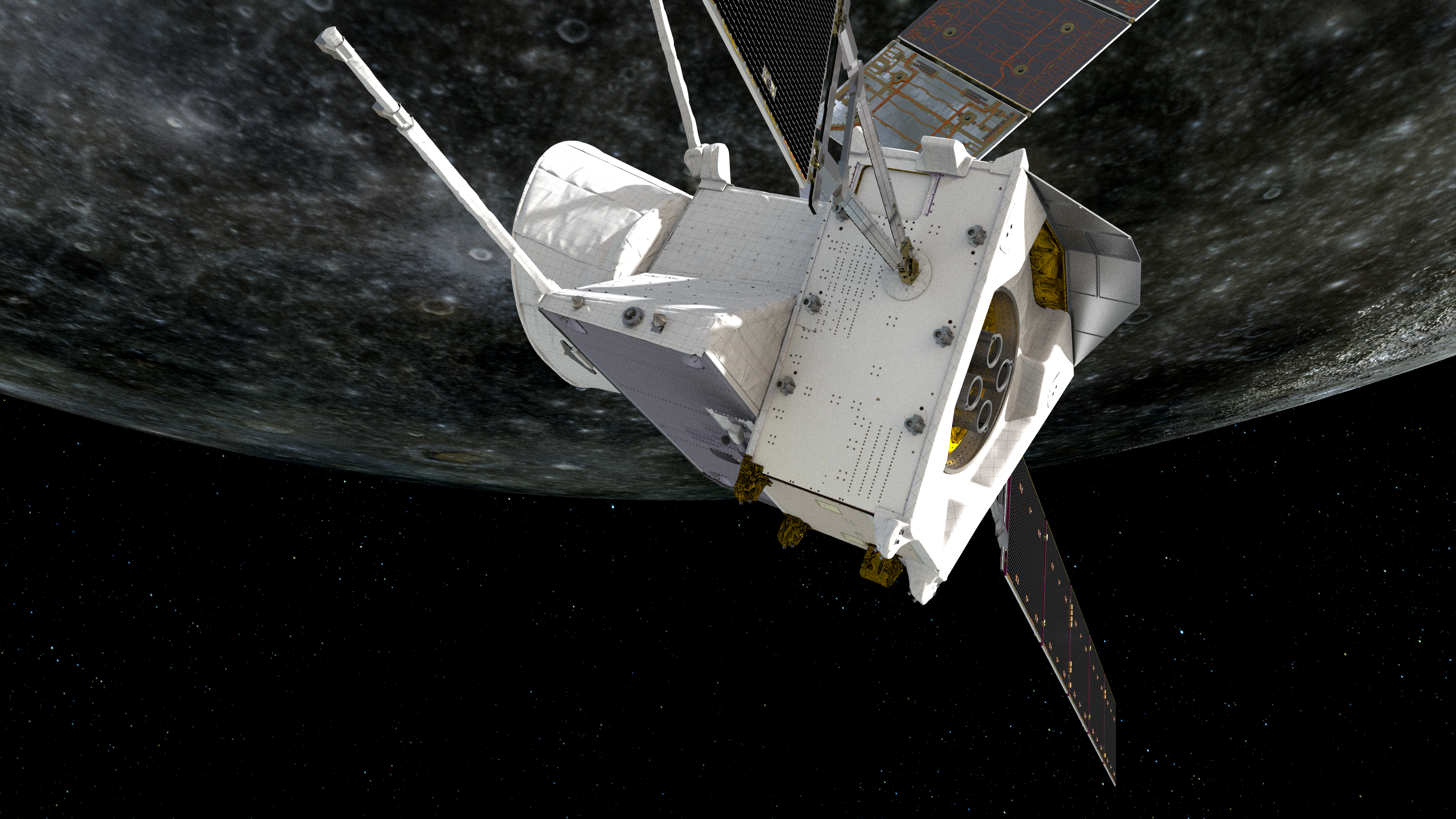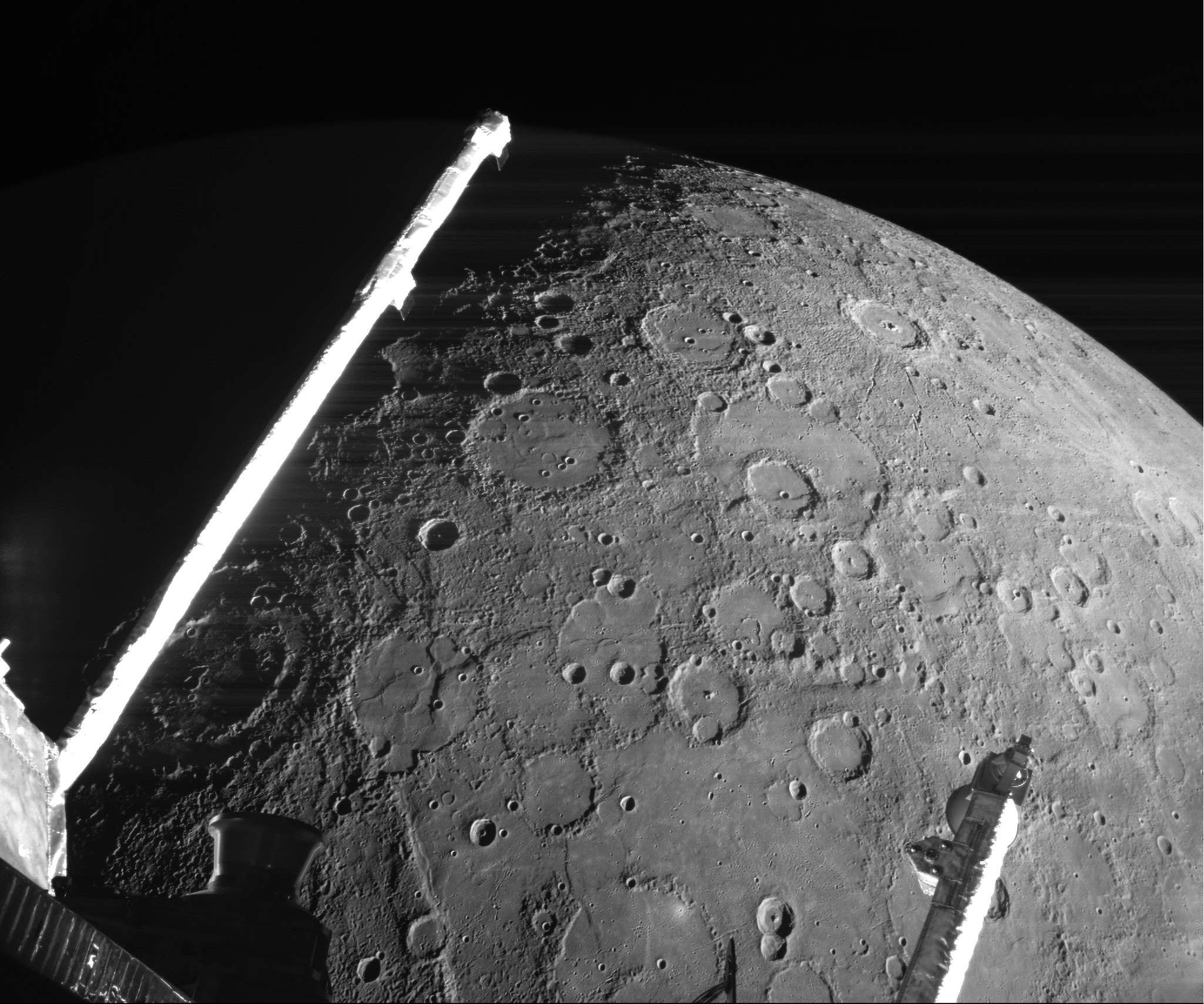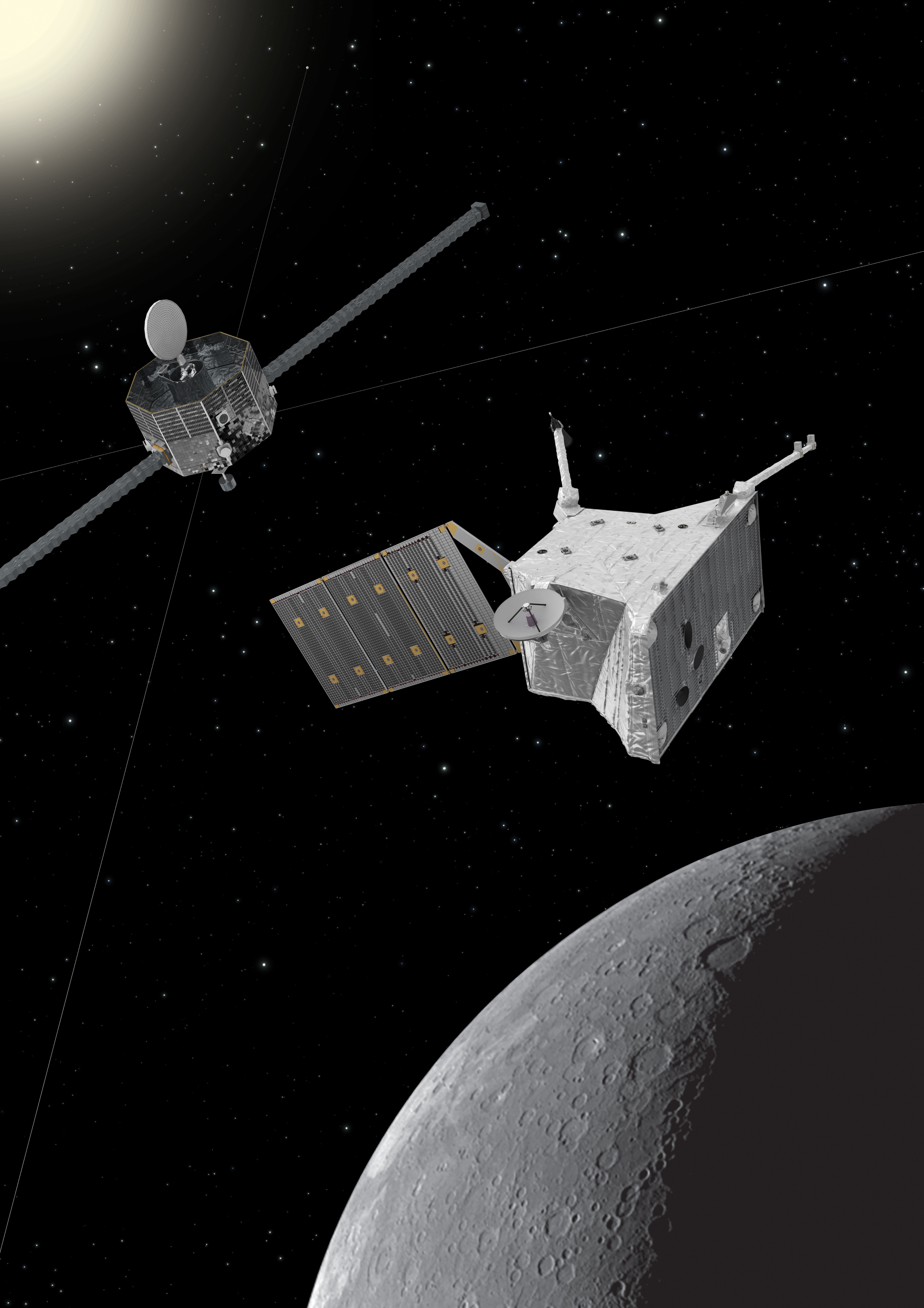BepiColombo is a space mission to the planet Mercury. The mission’s goal is to collect information on Mercury’s geographical features, interior structure, and surrounding environment. The BepiColombo spacecraft is scheduled to enter orbit around Mercury in 2025. The mission is a collaboration between the European Space Agency (ESA) and the Japan Aerospace Exploration Agency (JAXA).

Flyby of Mercury

The BepiColombo mission consists of two orbital probes, which travel as one spacecraft. A spacecraft module (section) connects them and provides propulsion. The two orbiters are the Mercury Magnetospheric Orbiter, called Mio for short, and the Mercury Planetary Orbiter (MPO). Mio, the smaller orbiter, was developed by JAXA. Mio is equipped to study Mercury’s magnetic field and the environment around the planet. A magnetic field is the area around a magnetic object in which its influence can be felt. The MPO, developed by ESA, carries instruments to study Mercury’s surface and interior.
Mio is shaped like an octagon with two arms and several antennas extending from its sides. The probe’s main body is 5 feet 11 inches (1.8 meters) wide, and each arm is 49 feet (15 meters) long. Its exterior is covered with solar panels to provide power. Mio carries a set of magnetometers to take detailed measurements of Mercury’s magnetic field. Other instruments detect particles flowing around the spacecraft, including plasma and particles from the sun, as well as dust from comets and asteroids. The probe also carries a specialized spectrometer to measure sodium in and around Mercury’s thin atmosphere.
The MPO is a boxy spacecraft with antennas, instrument arms, and a solar array attached to its sides. The solar array includes solar panels, which provide power, and reflectors, which help prevent overheating. When fully extended, the array is 24 1/2 feet (7.4 meters) long. The main body of the probe is about 12 feet (3.7 meters) wide. When the MPO orbits Mercury, the same side of the spacecraft will face the planet at all times. Most of the instruments are mounted on this face. On another side of the spacecraft is its large radiator panel. The radiator will reflect heat away from the MPO when it orbits close to Mercury’s hot surface.
The MPO’s laser altimeter will use laser pulses to create three-dimensional maps of Mercury’s surface. The probe’s cameras can photograph the surface in full color, as well as in infrared light. The probe carries several instruments to identify the gases present in Mercury’s thin atmosphere and the minerals that make up its surface. Other sensors will measure gravity around Mercury and test physicists’ predictions about how gravity behaves. The MPO also carries magnetometers, which will work with Mio’s magnetometers to measure magnetic activity in detail.
The combined BepiColombo spacecraft orbits the sun in a trajectory that repeatedly carries it past Mercury. During these flybys, the spacecraft takes photographs and collects data. The combined spacecraft is scheduled to enter orbit around Mercury in December 2025. At that time, the probes will separate and orbit the planet independently. They will each follow a polar orbit—that is, their paths around the planet will pass approximately over its north and south poles. The MPO will take 2 hours 18 minutes to complete one orbit. Mio will orbit at a greater distance from Mercury, taking 9 hours 18 minutes to complete one orbit. 
The BepiColombo combined spacecraft was launched on Oct. 20, 2018. The mission was named after the Italian mathematician and scientist Giuseppe (Bepi) Colombo, who advanced scientists’ understanding of Mercury in the 1900’s. Mio was named after a Japanese word for waterway.
See also Mariner; Space exploration (Exploring the inner planets).
